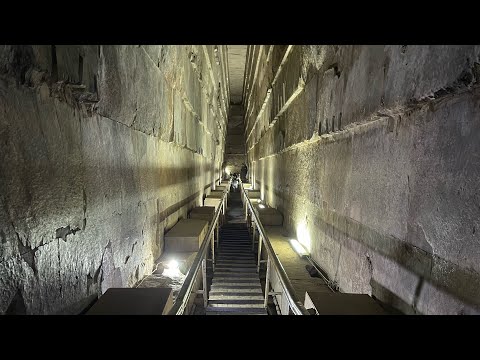
Nestled on the Giza Plateau, right on the outskirts of Cairo, Egypt, stands an architectural marvel that has captivated scholars, travelers, and historians alike for centuries—the Great Pyramid of Giza. Known also as the Pyramid of Cheops or Khufu, named after the Pharaoh for whom it was constructed, this ancient monument is not only a testament to human ingenuity but also a gateway into Egypt’s rich and mystifying past. In 2021, amidst a world striving towards normalcy post-pandemic, my journey into this millennia-old structure offered a unique perspective into its grandeur and enduring mysteries.
### Preparing for the Journey
Traveling to Cairo in 2021 required additional planning due to ongoing global health considerations. Ensuring all travel guidelines and entry requirements were met was essential. Upon arrival in Cairo, the pulsating heart of modern Egyptian culture and history awaited exploration. However, the highlight was undoubtedly my planned tour inside the Great Pyramid itself.
### Stepping Back in Time: The Exterior
Approaching the Great Pyramid is an experience unlike any other. Originally standing at 146 meters (now slightly reduced due to erosion to 138 meters), it was once covered in smooth Tura limestone, much of which has been pilfered over millennia. What remains is a core structure that still rises imposingly against the backdrop of a clear blue desert sky.
### The Entrance: A Passage Narrowly Carved
The entrance to Cheops’ pyramid isn’t grandiose; rather, it’s a modest opening barely noticeable at first glance. This design was intentional to deter robbers although it didn’t ultimately prevent breaches in antiquity. Modern visitors enter through the Robbers’ Tunnel dug by Caliph al-Ma’mun in AD 820—an unintended yet fascinating part of its layered history.
### Descending into History: The Descending Passage
Inside, we were greeted by narrow corridors and passages barely tall enough for one person at times. The Descending Passage leads down toward an unfinished subterranean chamber speculated either as an original burial chamber or a decoy for tomb raiders. Deeper inside lay paths that are a stark contrast to any lavish imaginations one might have about royal tombs.
### Ascending Towards Grandeur: The Grand Gallery
The journey took on an awe-inspiring turn upon reaching the Grand Gallery—a masterpiece within its own right with corbelled walls soaring up to 28 feet high. This corridor felt like ascending into history itself; each step brought us closer not just physically but also temporally closer to understanding ancient Egyptian civilization’s ambition and capabilities.
### The King’s Chamber: Heart of Solid Granite
Beyond doubt, reaching the King’s Chamber was both climactic and profound. Constructed entirely from red granite blocks transported from Aswan over 800 kilometers away, this room houses only an empty sarcophagus—its lid gone perhaps forever leaving behind myriad theories about its original contents.
The precision with which these blocks were cut and assembled remains an enduring mystery and speaks volumes about ancient engineering skills.
### Mysteries Wrapped in Stone: Exploring Shafts & Reliefs
Surrounding chambers and shafts presented further intrigue; some theorized as star alignment tools while others remain bafflingly inaccessible closed off since their discovery during previous explorations.
Enigmatic carvings occasionally adorned walls offering glimpses into religious beliefs surrounding Pharaoh Khufu’s divine rule over his kingdom both life thereafter.
### Reflections on Departure
Emerging back under Egypt’s sun after traversing through centuries within mere hours leaves one filled with reverence towards those who conceived executed such monumental ideas with nothing but copper tools human determination.
Visiting during 2021 particularly highlighted how despite challenges civilizations rise persevere much like how Giza’s pyramids have across ages—a reminder carved not just stone but across timelines cultures too.
For anyone lucky enough visit there’s no understating transformative effect stepping directly inside history can have—it doesn’t merely change how understand past; it enlightens ways perceive present prepares respect futures yet unwritten.
